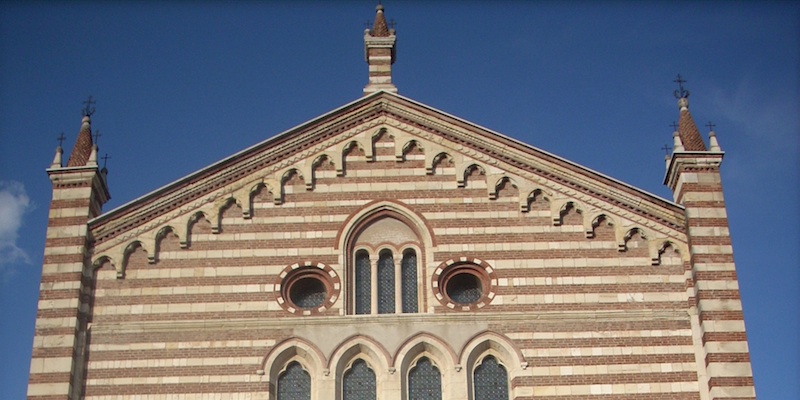On the banks of the river Adige, out of the Roman Porta Leoni, in the same place where the saints Fermo and Rustico were tortured to death in 304, people built a church in the 5th-6th c. in honour of them.
Between 755 and 759 St. Annone, the bishop of Verona, recovered from Trieste the mortal remains of the two martyrs and placed them in the Palaeo-Christian church into a “confessione”, the specific place in which people pay honour to the martyrs who have confessed the faith in Christ.
Between 1065 and 1143 the Benedictine monks demolished the Palaeo-Christian church and, to conserve the relics in the same place in which St. Annone had placed them, they built a Romanesque church on two levels: the lower church to keep the relics, the upper to be used for religious functions.
In 1261 the complex was handed over to the Franciscans, who transformed the upper church into its present form. The work of reconstruction was concluded in the year 1350. Throughout the following centuries, altars, chapels and sepulchral monuments were added.
In 1759 the sarcophagus with the mortal remains of the Martyrs was moved to the main altar of the upper church, in order to protect it from the flooding of the river Adige.
In 1807 the Franciscans were obliged to leave the monastery because of the Napoleonic conquest. A large part of the monastery passed to the State and the church became a parish assigned to diocesan clergy.
Note outside, the portal with the arches on the sides and the area outside the apse. Inside the upper church you can see the superb ribbed vault wooden ceiling and 14th and 15th century frescoes, works by Turone, Torbido , Stefano and Liberale da Verona, F. Caroto and a fresco by Pisanello. The lower Church, rare because of its 4 naves, is Romanesque and the upper Gothic.
Are you a local? What do you think about Church of San Fermo?
Login to suggest it!


